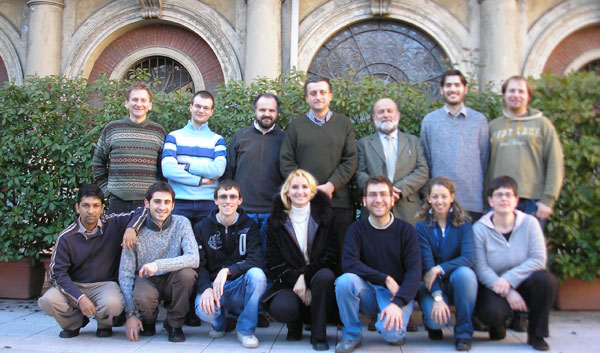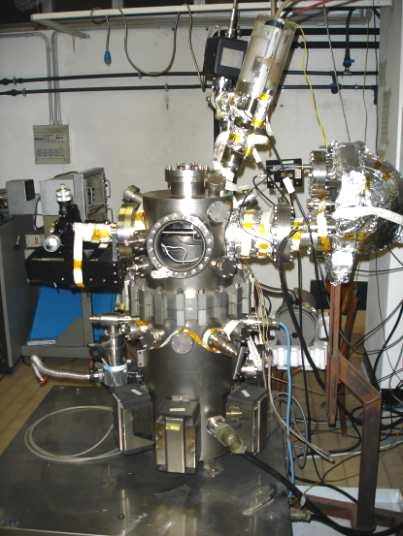XPS (X-Ray Photoelectron Spectroscopy)
Solid State Physics group
Experimental Physics Department Università degli Studi di Torino via Pietro Giuria 1, 10125 Torino (Italy)
|
Contact info : prof.Ettore Vittone
XPS technique description
X-ray photoelectron spectroscopy (XPS) is an analytical method allowing to determine chemical species at the surface of a sample.
This technique is widely used in both basic scientific research and applicative/industrial fields (studies on corrosion, oxidation, catalysis and microelectronics).
This analysis technique is based on the photoelectric effect phenomenon: atoms bombarded with monochromatic photons
(having energy hn) send out photoelectrons with kinetic energies (E ) depending from energetic levels
from which they have been extracted.
By measuring the kinetic energy of photoelectrons it is therefore possible to evaluate the binding energy of origin atoms (BE) and, in such a way,
to establish the chemical element of origin.
The obtained information is strictly related to the first atomic layers, and that makes XPS one of the main surface analysis techniques.
Taking into account the particular sensitivity of this technique, it is sometimes necessary to irradiate the surface with Ar ions (sputtering)
in order to remove the first atomic layers that can derive or be affacted from environmental contamination.
XPS is one of the "ESCA" (Electron-Spectroscopy for Chemical Analysis) techniques family, as it permits to determine not only the present
chemical species, but also the nature of chemical bonds in which they are involved by means of the analysis of the position (Chemical Shift)
of photoelectron peaks with respect to known values referring to pure atomic species.


